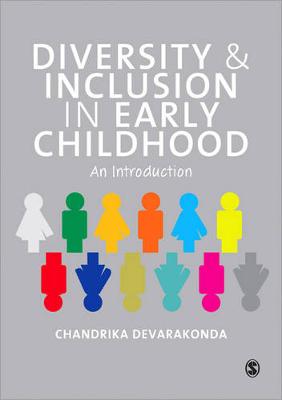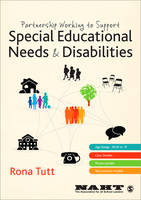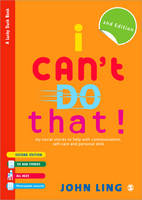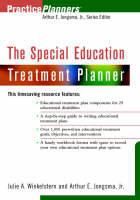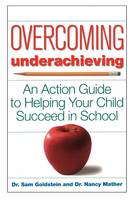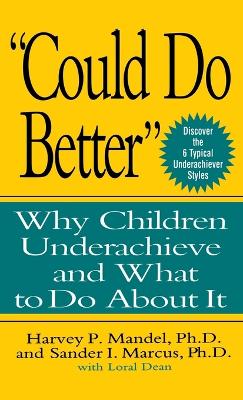Building Blocks for Learning Occupational Therapy Approaches
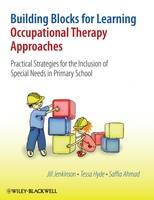 portes grátis
portes grátis
Building Blocks for Learning Occupational Therapy Approaches
Practical Strategies for the Inclusion of Special Needs in Primary School
Ahmad, Saffia; Hyde, Tessa; Jenkinson, Jill
John Wiley & Sons Inc
09/2008
448
Dura
Inglês
9780470058572
15 a 20 dias
1294
Acknowledgements xi
Introduction xiii
Online resources xvii
Foundation Skills 1
Introduction to foundation skills 1
FS 1 Introduction to sensory processing 5
FS 1A Vestibular processing (movement and balance sense) 11
FS 1B Tactile sense and tactile processing 15
FS 1C Proprioceptive processing/sense 19
FS 1D Auditory processing 23
FS 1E Visual processing 27
FS 2 Introduction to gross motor coordination 31
FS 2A Motor planning 35
FS 2B Postural stability and balance 39
FS 2C Spatial and body awareness 43
FS 2D Bilateral integration 47
FS 2E Midline crossing and laterality 51
FS 3 Introduction to fine motor control 55
FS 3A Visual motor integration 59
FS 3B Vision and ocular motor control 63
FS 3C Manual dexterity 69
FS 4 Introduction to perception 73
FS 4A Visual discrimination 77
FS 4B Visual spatial relationships 81
FS 4C Visual form constancy 85
FS 4D Visual figure ground discrimination 89
FS 4E Visual closure 93
FS 4F Visual memory 97
FS 5 Introduction to language 101
FS 5A Attention and listening 103
FS 5B Receptive language 105
FS 5C Expressive language 107
FS 5D Auditory memory 109
FS 6 Organisation 111
FS 7 Social and emotional aspects 113
Subject Areas 119
Introduction to subject areas 119
SA 1 General behaviour 122
SA 2 Literacy 126
SA 3 Numeracy 130
SA 4 Science 134
SA 5 Art and Design 138
SA 6 Information Communication Technology 144
SA 7 Physical Education 146
Subject areas teacher observation summary chart 150
Personalised profile for child 151
Medical Conditions 153
Introduction to medical conditions 153
MC 1 Attention deficit disorder/attention deficit hyperactivity disorder 155
MC 2 Autistic spectrum disorders, including Asperger's syndrome 175
MC 3 Cerebral palsy 197
MC 4 Developmental coordination disorder including dyspraxia 221
MC 5 Physical disabilities 243
Occupational Therapy Approaches 247
Introduction to occupational therapy approaches 247
OTA 1 Building firm foundations for spatial and body awareness 249
OTA 2 Building firm foundations for left/right awareness 253
General activities 253
Activities to help with left/right discrimination on oneself 254
Activities to help with left/right orientation on others 255
Activities to help with left/right discrimination of objects 255
Activities to help with left/right orientation and tracking when writing 256
OTA 3 Building firm foundations for fine motor control 259
Warm up for the upper limb 259
Handwriting warm up 261
Hand gym 263
Ideas for using therapeutic putty 265
Pencil aerobics 267
Doodle games 268
Hand/finger relaxation strategies 269
OTA 4 Building firm foundations for handwriting 271
Handwriting 271
Development of pencil grasp 273
Efficient and inefficient grasps 274
Improving pencil grasp 276
Three easy stages for teaching pencil grip 277
Equipment to help develop pencil grasp and fluency 278
Commercially available equipment 279
Hand development for handwriting 280
Ergonomics 281
Table surface 282
Texture of writing paper or surface 283
Paper position 284
Position in class 284
Development of pencil skills 285
Pre-writing skills, based around using your senses 286
Multi-sensory handwriting approach 288
Establishing correct pressure 292
Consolidation for efficient handwriting 293
Rules for writing tasks 294
Activities to encourage self-evaluation of handwriting 296
Copying from the board 297
Specific advice for left-handed children 298
OTA 5 Building firm foundations for alternative methods of recording 305
Complexity of handwriting 305
Low-tech alternatives 306
Interactive whiteboards 306
Digital cameras 307
Word processing as an alternative 308
ICT resources 310
Suggested equipment 310
Software 310
Adaptations/strategies to try 311
Further resources 312
OTA 6 Building firm foundations for dressing skills 315
OTA 7 Building firm foundations for scissor development 319
The 14 steps in scissor skill development 319
Activities to develop pre-scissor skills 320
Activities to help with scissor skills 320
Equipment to help with scissor control 321
OTA 8 Sensory strategies 323
OTA 9 Self-organisation approaches 327
OTA 10 Consolidating foundation skills through group activities 333
Establishing groups 334
Non-themed activity groups 336
Themed activity groups 336
OTA 10A Gross motor activities for pirate groups 340
OTA 10B Fine motor activities for pirate groups 344
OTA 11 Consolidating foundation skills for transition from primary to secondary school 349
Appendices 359
A 1 Ages and stages of development 361
A 2 Alphabet ABC sentences 369
A 3 Fine motor circuit score sheet 371
A 4 Handwriting self-evaluation checklist 373
A 5 Handwriting programmes and fine motor resources 375
A 6 Information communication technology checklist 379
A 7 Movement programmes and gross motor resources 381
A 8 Individual child profile 387
A 9 Resources for developing social, emotional and behavioural skills 389
A 10 Teachers' checklist for visual signs 395
A 11 Thinking skills 397
A 12 Twelve rules of legibility 401
A 13 Visual perception resources 403
A 14 Work system 405
Equipment Resources 407
Suppliers' Addresses 413
Useful Addresses 417
Further Reading 421
Glossary 423
Index 427
Acknowledgements xi
Introduction xiii
Online resources xvii
Foundation Skills 1
Introduction to foundation skills 1
FS 1 Introduction to sensory processing 5
FS 1A Vestibular processing (movement and balance sense) 11
FS 1B Tactile sense and tactile processing 15
FS 1C Proprioceptive processing/sense 19
FS 1D Auditory processing 23
FS 1E Visual processing 27
FS 2 Introduction to gross motor coordination 31
FS 2A Motor planning 35
FS 2B Postural stability and balance 39
FS 2C Spatial and body awareness 43
FS 2D Bilateral integration 47
FS 2E Midline crossing and laterality 51
FS 3 Introduction to fine motor control 55
FS 3A Visual motor integration 59
FS 3B Vision and ocular motor control 63
FS 3C Manual dexterity 69
FS 4 Introduction to perception 73
FS 4A Visual discrimination 77
FS 4B Visual spatial relationships 81
FS 4C Visual form constancy 85
FS 4D Visual figure ground discrimination 89
FS 4E Visual closure 93
FS 4F Visual memory 97
FS 5 Introduction to language 101
FS 5A Attention and listening 103
FS 5B Receptive language 105
FS 5C Expressive language 107
FS 5D Auditory memory 109
FS 6 Organisation 111
FS 7 Social and emotional aspects 113
Subject Areas 119
Introduction to subject areas 119
SA 1 General behaviour 122
SA 2 Literacy 126
SA 3 Numeracy 130
SA 4 Science 134
SA 5 Art and Design 138
SA 6 Information Communication Technology 144
SA 7 Physical Education 146
Subject areas teacher observation summary chart 150
Personalised profile for child 151
Medical Conditions 153
Introduction to medical conditions 153
MC 1 Attention deficit disorder/attention deficit hyperactivity disorder 155
MC 2 Autistic spectrum disorders, including Asperger's syndrome 175
MC 3 Cerebral palsy 197
MC 4 Developmental coordination disorder including dyspraxia 221
MC 5 Physical disabilities 243
Occupational Therapy Approaches 247
Introduction to occupational therapy approaches 247
OTA 1 Building firm foundations for spatial and body awareness 249
OTA 2 Building firm foundations for left/right awareness 253
General activities 253
Activities to help with left/right discrimination on oneself 254
Activities to help with left/right orientation on others 255
Activities to help with left/right discrimination of objects 255
Activities to help with left/right orientation and tracking when writing 256
OTA 3 Building firm foundations for fine motor control 259
Warm up for the upper limb 259
Handwriting warm up 261
Hand gym 263
Ideas for using therapeutic putty 265
Pencil aerobics 267
Doodle games 268
Hand/finger relaxation strategies 269
OTA 4 Building firm foundations for handwriting 271
Handwriting 271
Development of pencil grasp 273
Efficient and inefficient grasps 274
Improving pencil grasp 276
Three easy stages for teaching pencil grip 277
Equipment to help develop pencil grasp and fluency 278
Commercially available equipment 279
Hand development for handwriting 280
Ergonomics 281
Table surface 282
Texture of writing paper or surface 283
Paper position 284
Position in class 284
Development of pencil skills 285
Pre-writing skills, based around using your senses 286
Multi-sensory handwriting approach 288
Establishing correct pressure 292
Consolidation for efficient handwriting 293
Rules for writing tasks 294
Activities to encourage self-evaluation of handwriting 296
Copying from the board 297
Specific advice for left-handed children 298
OTA 5 Building firm foundations for alternative methods of recording 305
Complexity of handwriting 305
Low-tech alternatives 306
Interactive whiteboards 306
Digital cameras 307
Word processing as an alternative 308
ICT resources 310
Suggested equipment 310
Software 310
Adaptations/strategies to try 311
Further resources 312
OTA 6 Building firm foundations for dressing skills 315
OTA 7 Building firm foundations for scissor development 319
The 14 steps in scissor skill development 319
Activities to develop pre-scissor skills 320
Activities to help with scissor skills 320
Equipment to help with scissor control 321
OTA 8 Sensory strategies 323
OTA 9 Self-organisation approaches 327
OTA 10 Consolidating foundation skills through group activities 333
Establishing groups 334
Non-themed activity groups 336
Themed activity groups 336
OTA 10A Gross motor activities for pirate groups 340
OTA 10B Fine motor activities for pirate groups 344
OTA 11 Consolidating foundation skills for transition from primary to secondary school 349
Appendices 359
A 1 Ages and stages of development 361
A 2 Alphabet ABC sentences 369
A 3 Fine motor circuit score sheet 371
A 4 Handwriting self-evaluation checklist 373
A 5 Handwriting programmes and fine motor resources 375
A 6 Information communication technology checklist 379
A 7 Movement programmes and gross motor resources 381
A 8 Individual child profile 387
A 9 Resources for developing social, emotional and behavioural skills 389
A 10 Teachers' checklist for visual signs 395
A 11 Thinking skills 397
A 12 Twelve rules of legibility 401
A 13 Visual perception resources 403
A 14 Work system 405
Equipment Resources 407
Suppliers' Addresses 413
Useful Addresses 417
Further Reading 421
Glossary 423
Index 427

